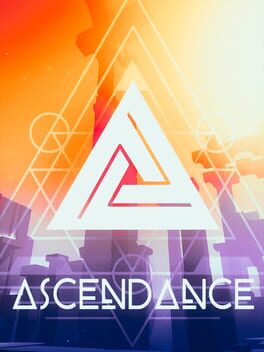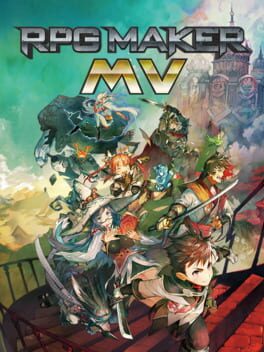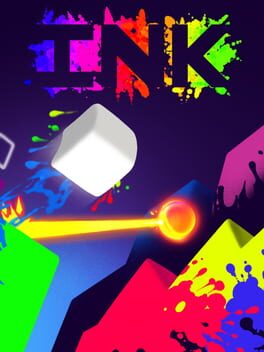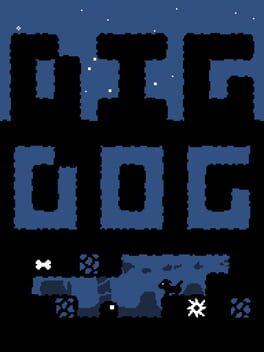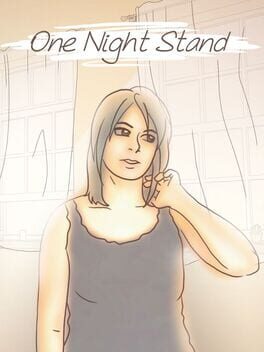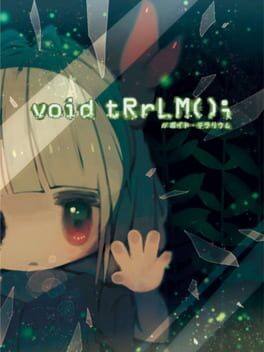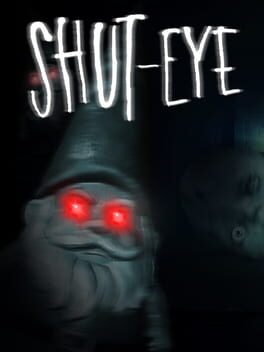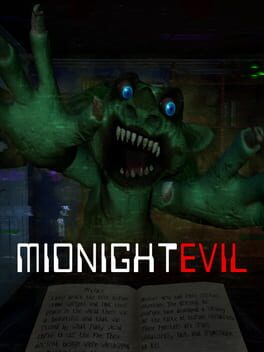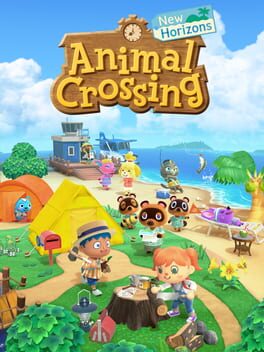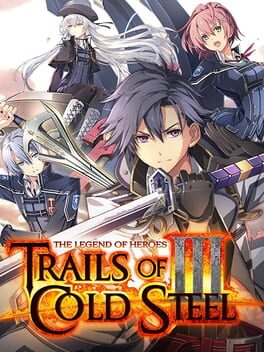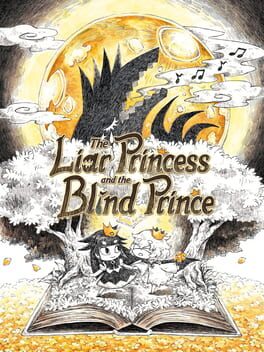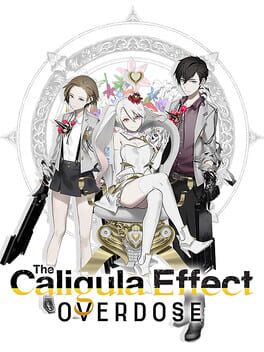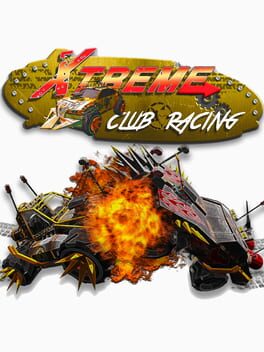joshmille99
2018
ast year I played a game called Refunct in my Backlog to the Front quest. I praised it and had a good time, but as similar as Ascendance is, it’s not quite on the same level. It’s an overall bummer that instead makes me want to replay Refunct.
Much like Refunct, Ascendance is a minimalistic first-person platformer. The goal is traversing the level to reach a checkpoint of sorts. As each checkpoint is reached, more platforms are generated with a new point to gravitate to. Usually, these locations are at high areas leading to risky leaps and hopes of hitting the right platforms. The player will run into some assistance or obstacles from moving platforms or bounce plates, but for the most part, it’s all on the player.
The biggest problem is movement. It’s more sluggish in both speed and jumps than Refunct. I found myself less confident getting around and really needing to push the limits of jump distance. There is also no wall jump leading to less interesting ways of reaching great heights. The speed was initially jarring because the run button was tied to the L Bumper on the Nintendo Switch, a button I apparently never thought to try for running. So until the second level, I never knew there was a run option.
But unfortunately, that’s not it. A big deterrent is the frame rate. Ascendance begins to chug as the level loads in more structures. Jump pads, in particular, felt like single-digit frame rates as I levitated upward and have to give the game a second before moving. In a platformer like this, a drop in frame rate can kill momentum in travel leading to death. While resurrection is immediate, it also means starting back at the last checkpoint. If that checkpoint is on the other side of the map, interest wanes more and more after each attempt.
With that negativity out of the way, Ascendance is a real stunning game in the same way as Refunct. The placement of platforms leads to a great visual by the end and the colors and simple geometry make it stand out as well. Also, like Refunct, Ascendance also features some chill and relaxing music for a game meant to be played with the same mindset.
I know I keep bringing up Refunct in this mini-review of Ascendance. It’s clear they are cut from the same cloth. Though Ascendance features more levels and similar gameplay, Refunct feels more polished and less troublesome to play. Also, unlike Ascendance, my game didn’t crash while playing. So please note that while I do suggest playing this game (I did still have fun), I would recommend playing Refunct before playing Ascendance.
Much like Refunct, Ascendance is a minimalistic first-person platformer. The goal is traversing the level to reach a checkpoint of sorts. As each checkpoint is reached, more platforms are generated with a new point to gravitate to. Usually, these locations are at high areas leading to risky leaps and hopes of hitting the right platforms. The player will run into some assistance or obstacles from moving platforms or bounce plates, but for the most part, it’s all on the player.
The biggest problem is movement. It’s more sluggish in both speed and jumps than Refunct. I found myself less confident getting around and really needing to push the limits of jump distance. There is also no wall jump leading to less interesting ways of reaching great heights. The speed was initially jarring because the run button was tied to the L Bumper on the Nintendo Switch, a button I apparently never thought to try for running. So until the second level, I never knew there was a run option.
But unfortunately, that’s not it. A big deterrent is the frame rate. Ascendance begins to chug as the level loads in more structures. Jump pads, in particular, felt like single-digit frame rates as I levitated upward and have to give the game a second before moving. In a platformer like this, a drop in frame rate can kill momentum in travel leading to death. While resurrection is immediate, it also means starting back at the last checkpoint. If that checkpoint is on the other side of the map, interest wanes more and more after each attempt.
With that negativity out of the way, Ascendance is a real stunning game in the same way as Refunct. The placement of platforms leads to a great visual by the end and the colors and simple geometry make it stand out as well. Also, like Refunct, Ascendance also features some chill and relaxing music for a game meant to be played with the same mindset.
I know I keep bringing up Refunct in this mini-review of Ascendance. It’s clear they are cut from the same cloth. Though Ascendance features more levels and similar gameplay, Refunct feels more polished and less troublesome to play. Also, unlike Ascendance, my game didn’t crash while playing. So please note that while I do suggest playing this game (I did still have fun), I would recommend playing Refunct before playing Ascendance.
2015
2015
I wasn’t entirely sure what to expect from Ink when I grabbed it. It was clearly a platformer but had a minimalism look of Thomas Was Alone and a level discovery aspect similar to The Unfinished Swan. I’m glad that I gave it a shot though because it was both fun and challenging while still looking amazing and feeling different from other platformers.
Ink includes 75 levels for players to leap and dodge through with differing clear conditions. Before the goal will show a rainbow allowing the exit, there can be a number of things to accomplish. Keys may need to be collected. A boss may need to be defeated. Simply reaching the end. Hopping on all the “enemy” squares. Each level is something different to try and achieve, and with how this game plays, it’s never dull.
Each level typically starts in the darkness outside of the main controllable square. The square is essentially a paint-filled sponge. The ground it touches will change colors as it moves which is good since that’s the way you are able to locate the platforms. Leaping in the air and doing a double jump causes the square to explode causing blots of color to fly off and paint the surroundings. So what was once pure darkness now may have outlines of where platformers or level ending spikes lay. It’s not uncommon to die as you try and paint an entire level to see the layout. However, with the quick respawn and the ink remaining even after death, the game becomes more manageable with every resurrection.
As much fun as I had though playing Ink, there was something off about the jumping I just couldn’t like. There is a floatiness to the jumps where landing on the platform would become frustrating. I would often overshoot platforms or not be able to course-correct if I know a little too far. Being able to wall-jump solves a few problems here, but once projectiles to kill you are added in, it becomes a huge detriment.
There is also the music which, while not bad, doesn’t quite fit the mood. Ink‘s soundtrack is that of soft calming music that would work well in a game more soothing than a tough platformer. Both the platforming and the bright bold colors of the ink splattering throughout the game scream for something more industrial or synth. Some beat to get you moving your head as you die repeatedly suits the game much better.
Ink is a perfect game to pick up and play for short bursts. The unique simplicity behind it mixed with the beautiful colors and challenging gameplay makes it a game worth playing. If you are in the market to find a good platformer to try out at a cheap price, pick up Ink next time it’s on sale.
Ink includes 75 levels for players to leap and dodge through with differing clear conditions. Before the goal will show a rainbow allowing the exit, there can be a number of things to accomplish. Keys may need to be collected. A boss may need to be defeated. Simply reaching the end. Hopping on all the “enemy” squares. Each level is something different to try and achieve, and with how this game plays, it’s never dull.
Each level typically starts in the darkness outside of the main controllable square. The square is essentially a paint-filled sponge. The ground it touches will change colors as it moves which is good since that’s the way you are able to locate the platforms. Leaping in the air and doing a double jump causes the square to explode causing blots of color to fly off and paint the surroundings. So what was once pure darkness now may have outlines of where platformers or level ending spikes lay. It’s not uncommon to die as you try and paint an entire level to see the layout. However, with the quick respawn and the ink remaining even after death, the game becomes more manageable with every resurrection.
As much fun as I had though playing Ink, there was something off about the jumping I just couldn’t like. There is a floatiness to the jumps where landing on the platform would become frustrating. I would often overshoot platforms or not be able to course-correct if I know a little too far. Being able to wall-jump solves a few problems here, but once projectiles to kill you are added in, it becomes a huge detriment.
There is also the music which, while not bad, doesn’t quite fit the mood. Ink‘s soundtrack is that of soft calming music that would work well in a game more soothing than a tough platformer. Both the platforming and the bright bold colors of the ink splattering throughout the game scream for something more industrial or synth. Some beat to get you moving your head as you die repeatedly suits the game much better.
Ink is a perfect game to pick up and play for short bursts. The unique simplicity behind it mixed with the beautiful colors and challenging gameplay makes it a game worth playing. If you are in the market to find a good platformer to try out at a cheap price, pick up Ink next time it’s on sale.
2018
2016
I remember seeing One Night Stand at one of the conferences at E3 and thinking it looked great. The type of game is right up my wheelhouse and I was oblivious that it had already been released on Steam. So this game is a bit of a cheat because it wasn’t in my backlog, but purchased when it came out on consoles a few weeks ago.
One Night Stand won’t take long to experience the first time through, but it does have multiple endings based on the actions performed and conversations. Most of the time you will see the same dialogue and animations over and over again with any differences reliant on the decisions made. This makes multiple playthroughs a little rough since it is a short game and having it play out pretty similarly time and time again doesn’t work in its favor.
Also, as someone who has never had a one night stand (much less a drunken forgotten one), I can’t comment on the accuracy of the awkwardness of waking up next to someone you don’t know. The game does a good job though of putting things in place to either split the room or try and hang in there for something more lasting; however the problem comes into knowing how one wants to proceed in the conversation but the game going slightly off-base with where you think it would take you.
The animation though is what helps it stand out from other games. It’s not super detailed but the way it moves reminds me of the “Take On Me” music video by A-ha though it isn’t a one-for-one comparison. However, much like the dialogue, it will be a lot of the same animation as the game is replayed although it never became as grating as the dialogue would after 14 different attempts at the good ending.
One Night Stand won’t blow the socks off anyone but fortunately the low asking price may offset any irks about the replayability and repetitive nature of the game. But if you’re looking for a quick point-and-click visual novel of sorts, this is one worth giving a shot.
One Night Stand won’t take long to experience the first time through, but it does have multiple endings based on the actions performed and conversations. Most of the time you will see the same dialogue and animations over and over again with any differences reliant on the decisions made. This makes multiple playthroughs a little rough since it is a short game and having it play out pretty similarly time and time again doesn’t work in its favor.
Also, as someone who has never had a one night stand (much less a drunken forgotten one), I can’t comment on the accuracy of the awkwardness of waking up next to someone you don’t know. The game does a good job though of putting things in place to either split the room or try and hang in there for something more lasting; however the problem comes into knowing how one wants to proceed in the conversation but the game going slightly off-base with where you think it would take you.
The animation though is what helps it stand out from other games. It’s not super detailed but the way it moves reminds me of the “Take On Me” music video by A-ha though it isn’t a one-for-one comparison. However, much like the dialogue, it will be a lot of the same animation as the game is replayed although it never became as grating as the dialogue would after 14 different attempts at the good ending.
One Night Stand won’t blow the socks off anyone but fortunately the low asking price may offset any irks about the replayability and repetitive nature of the game. But if you’re looking for a quick point-and-click visual novel of sorts, this is one worth giving a shot.
2020
2016
If Midnight Evil didn’t do it for you due to the Urklings, Shut Eye is pretty similar with different terrors waiting for you to let your guard down. Midnight Evil involved less shadows and environmental tone, but Shut Eye does have those two things going for it although the overall personality is non-existent.
In Shut Eye, you play as a kid who wakes up in the middle of the night to find a handful of things coming to get you. One moment it may be a garden gnome, the next may be a mechanical crab with a baby head ala Toy Story‘s Sid’s creation. Using a battery-dwindling flashlight to lower your anxiety and a music box to calm the nightmares, you must survive night after night with them growing increasingly more eager to kill you.
Each new day moves the time required to survive up by one hour with the ending time remaining the same at 7am. As the time to survive grows, the amount of time for the creatures to get close shortens with each day. Managing both the flashlight to reduce anxiety and music box to push back the monsters at the risk of increased anxiety becomes a chore, especially when waiting for batteries to respawn.
Much like Midnight Evil though, it’s extremely repetitious. Each night is the same thing, except here, there’s no real life behind any of it. There’s no story being told and nobody speaking to you. It’s just the act of keeping the enemies at bay over and over again for no real reason. Even the smallest of narrative could do something for Shut Eye. Instead, it boils down to playing until you get bored, which doesn’t take long to achieve.
Shut Eye could have been something cool. Framing it around a child fearing the night is a simple fix and adding in more things to torment the kid would have helped too. Sadly it does so little, and in a genre ripe with games just like this, there’s no real reason to keep an eye on this one.
In Shut Eye, you play as a kid who wakes up in the middle of the night to find a handful of things coming to get you. One moment it may be a garden gnome, the next may be a mechanical crab with a baby head ala Toy Story‘s Sid’s creation. Using a battery-dwindling flashlight to lower your anxiety and a music box to calm the nightmares, you must survive night after night with them growing increasingly more eager to kill you.
Each new day moves the time required to survive up by one hour with the ending time remaining the same at 7am. As the time to survive grows, the amount of time for the creatures to get close shortens with each day. Managing both the flashlight to reduce anxiety and music box to push back the monsters at the risk of increased anxiety becomes a chore, especially when waiting for batteries to respawn.
Much like Midnight Evil though, it’s extremely repetitious. Each night is the same thing, except here, there’s no real life behind any of it. There’s no story being told and nobody speaking to you. It’s just the act of keeping the enemies at bay over and over again for no real reason. Even the smallest of narrative could do something for Shut Eye. Instead, it boils down to playing until you get bored, which doesn’t take long to achieve.
Shut Eye could have been something cool. Framing it around a child fearing the night is a simple fix and adding in more things to torment the kid would have helped too. Sadly it does so little, and in a genre ripe with games just like this, there’s no real reason to keep an eye on this one.
2019
Midnight Evil is a simple horror game that gives me vibes of Five Nights at Freddy’s. Instead of checking out cameras to catch the horrors that lurk in a pizza joint, instead you are trying to read through a book in your bedroom as creatures try to sneak up on you. Keep up the volume, otherwise you may not hear them as they draw near.
The story is about a child who discovers a book in his attic one night. Unfortunately he learns the hard way that uncovering the book also leads to gremlin-like monsters called Urklings trying to devour him. The only way to stop the Urklings is to read through the book which in turn “captures” them. The Urklings don’t make it easy though as they try to hide in your room as you progress in the story and the only defense is spotting them before they leap up and feast on your bones.
The gameplay works enough for what it is trying to achieve. The room has several places for the Urklings to hide and at times they can blend in if you look too quickly. Sounds can be heard when they sneak in, usually at the end of sentences, indicating to put the book down and glance around the room. For the Urklings to hide again, the crosshair must come in contact with them which can be a little finicky due to how quick it moves and can easily overshoot where you want to look. I lost many times because of this.
When you do move the crosshair down to bring the book back up, you are treated to the lore of the Urklings. It describes their tribes and gives some backstory of victims although none of it is what I would call super engaging, especially since you constantly keep an ear out for sounds of the Urklings sneaking in.
Midnight Evil isn’t going to creep you out and at most give you some loud jump scares if you aren’t paying attention…or having trouble with the reticle. However I wouldn’t call it a bad game and at worse call it repetitious with where Urklings hide and the general back and forth of room gazing. There is a sense of humor in the room decorations and the radio DJ that gives this an almost B-horror movie feel. If these type of horror games are your bread and butter, this one will fit in nicely.
The story is about a child who discovers a book in his attic one night. Unfortunately he learns the hard way that uncovering the book also leads to gremlin-like monsters called Urklings trying to devour him. The only way to stop the Urklings is to read through the book which in turn “captures” them. The Urklings don’t make it easy though as they try to hide in your room as you progress in the story and the only defense is spotting them before they leap up and feast on your bones.
The gameplay works enough for what it is trying to achieve. The room has several places for the Urklings to hide and at times they can blend in if you look too quickly. Sounds can be heard when they sneak in, usually at the end of sentences, indicating to put the book down and glance around the room. For the Urklings to hide again, the crosshair must come in contact with them which can be a little finicky due to how quick it moves and can easily overshoot where you want to look. I lost many times because of this.
When you do move the crosshair down to bring the book back up, you are treated to the lore of the Urklings. It describes their tribes and gives some backstory of victims although none of it is what I would call super engaging, especially since you constantly keep an ear out for sounds of the Urklings sneaking in.
Midnight Evil isn’t going to creep you out and at most give you some loud jump scares if you aren’t paying attention…or having trouble with the reticle. However I wouldn’t call it a bad game and at worse call it repetitious with where Urklings hide and the general back and forth of room gazing. There is a sense of humor in the room decorations and the radio DJ that gives this an almost B-horror movie feel. If these type of horror games are your bread and butter, this one will fit in nicely.
Check out my review for it here:
https://vgu.tv/2020/05/05/final-fantasy-vii-remake-review-its-a-wonderful-strife/
https://vgu.tv/2020/05/05/final-fantasy-vii-remake-review-its-a-wonderful-strife/
Check out my review for it here:
https://vgu.tv/2020/04/07/co-op-review-animal-crossing-new-horizons/
https://vgu.tv/2020/04/07/co-op-review-animal-crossing-new-horizons/
You can check out my review for it here:
https://vgu.tv/2019/02/08/the-liar-princess-and-the-blind-prince-review/
https://vgu.tv/2019/02/08/the-liar-princess-and-the-blind-prince-review/
You can check out my review for it here:
https://vgu.tv/2019/03/04/the-caligula-effect-overdose-review/
https://vgu.tv/2019/03/04/the-caligula-effect-overdose-review/
2019
Check out my impressions of it here:
https://vgu.tv/2020/01/12/bait-and-switch-xtreme-club-racing-and-soccer-slammers/
https://vgu.tv/2020/01/12/bait-and-switch-xtreme-club-racing-and-soccer-slammers/
